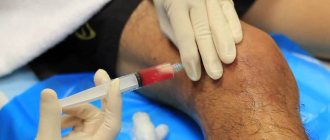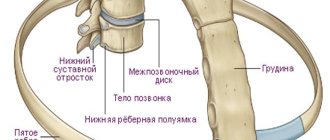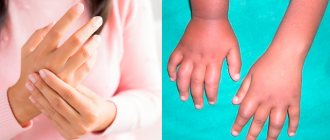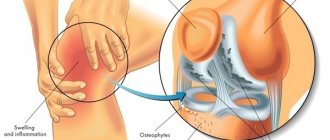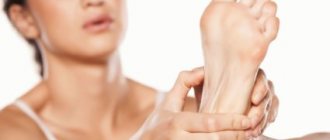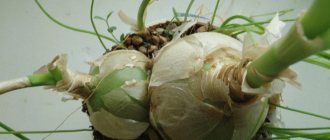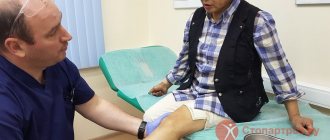Morning joint stiffness is a characteristic symptom indicating pathological changes in connective and bone tissue. The reasons that provoke this condition can be different:
- Inflammation;
- Degeneration;
- Dystrophy;
- Injury;
- Deformation.
Morning stiffness of the joints in the morning can have either a periodic (transient) or a regular (constantly present) nature of the course of this pathology. In the first case, this is directly related to periods of exacerbation of the musculoskeletal system disease, in the second, these factors may be independent. Therefore, the constant presence of stiffness and pain in the joints indicates a systemic disease (gout, uric acid diathesis, psoriasis, systemic lupus erythematosus, ankylosing spondylitis, rheumatoid polyarthritis).
When a patient begins to complain of morning joint stiffness, it is necessary to conduct a comprehensive examination and identify the real cause of these unpleasant sensations. The Yusupov Hospital helps everyone who wants to get rid of joint stiffness, discomfort and pain, using the latest European treatment methods. The clinic employs doctors of the highest category who are constantly improving in their field of activity. Yusupov Hospital is proud not only of its first-class medical staff, but also of high-precision diagnostic equipment.
Morning joint stiffness: causes
Synovitis is the most common cause of joint stiffness. Synovitis is an inflammation of the synovial membrane of a bone joint, characterized by the presence of aseptic effusion in the cavity lined by it (synovial bursa). The synovial membrane consists of cartilage fibers. In structure and function, these fibers resemble a sponge. When straightened, they actively absorb synovial fluid. And during compression (which, in general, happens during any act of movement), this fluid is released, ensuring the sliding of all articular surfaces. If there is inflammation of the synovial membrane, after a long static position of the limb, the process of synthesis of synovial fluid is disrupted. This becomes the immediate cause of morning stiffness.
The peculiarity of this pathology is that after a few hours of walking or after morning exercises, all discomfort disappears. However, this is only a temporary phenomenon, since as synovitis progresses, a set of special exercises loses its positive effect and stiffness persists throughout the day.
Among other causes of morning joint stiffness, many clinicians identify such pathologies of the musculoskeletal system as:
- Ankylosing spondylitis is a chronic, progressive inflammatory and degenerative disease of cartilage tissue. This disease affects both the small vertebral joints of the spine and the large joints of the bones of the upper and lower extremities;
- deforming osteoarthritis is a degenerative disease accompanied by destruction of the cartilaginous synovial membrane. As a result of the pathological process, the production of synovial fluid is significantly reduced and a feeling of stiffness is formed;
- scar changes in the ligamentous tendon apparatus and the muscles surrounding the joint (partial or total contractures);
- ankylosis;
- osteochondrosis - as this disease progresses, innervation processes are disrupted due to pathological changes in the structure of the spinal column.
- bursitis and tendovaginitis.
Check-up “Healthy joints”
Pain and swelling in the joints can be symptoms of many diseases, for example, rheumatoid and rheumatoid arthritis, arthrosis, osteoarthritis, gout, chondrocalcinosis, ankylosing spondylitis, etc. Inflammation of the joints can also be caused by infectious or systemic diseases: influenza, scarlet fever, tuberculosis, gonorrhea, chlamydia, as well as a chronic focus of infection caused by staphylococci or streptococci. The basis of many joint diseases is the inflammatory process, which causes mobility impairments in the musculoskeletal system.
Characteristic symptoms of joint damage are:
- Morning stiffness
- Periodic pain in the joints due to decreased appetite, fatigue, weight loss
- Acute joint pain
- The joints are painful on palpation and movement in them is limited.
To diagnose joint diseases, the following indicators are used: Rheumatoid factor
is certain antibodies that are found in the blood of 70-90% of patients suffering from rheumatoid arthritis. In healthy people or those suffering from another autoimmune disease, low levels of RF are observed. Included in the list of standard criteria for rheumatoid arthritis.
Erythrocyte sedimentation rate (ESR)
– a nonspecific indicator of inflammation, reflects the rate of separation of blood in a test tube with an added anticoagulant into two layers: upper (clear plasma) and lower (settled red blood cells). In a healthy person, the erythrocyte sedimentation rate is low; with the development of inflammation, it increases. This indicator does not indicate the presence of any specific disease; it is a general indicator of the presence of inflammatory processes in the body, their degree and activity. In acute inflammatory diseases, ESR usually increases a day after the onset of the disease, while normalization of this indicator after recovery occurs more slowly and can take from several days to two or more weeks. In lupus and polymyalgia rheumatica, ESR levels are directly related to disease activity.
C-reactive protein
also indicates the level of inflammation. The test for this factor is considered more accurate than ESR. In patients with rheumatoid arthritis, high levels of C-reactive protein indicate severe inflammation or damage to the body. Both ESR and CRP are used to monitor disease activity and the patient's response to treatment.
General blood test includes
includes determination of hemoglobin concentration, number of erythrocytes, leukocytes and platelets, hematocrit value and erythrocyte indices (MCV, RDW, MCH, MCHC). The leukocyte formula is the percentage of different types of leukocytes (neutrophils, lymphocytes, eosinophils, monocytes, basophils). This test is used for a general assessment of health, diagnosis, monitoring the course, assessing the effectiveness of therapy for many diseases, including anemia, infections, inflammatory diseases, etc. It is recommended to donate blood in the morning, between 8 and 12 o’clock. Blood is drawn on an empty stomach, after 6–8 hours of fasting. It is allowed to drink water without gas and sugar. On the eve of the examination, you should avoid eating and physical overload.
Morning stiffness in the legs
In approximately 75% of cases, stiffness in joint movements affects the lower extremities. When it comes to morning stiffness in the legs, we should also mention neurological processes associated with impaired conduction of the sciatic nerve. A secondary set of symptoms, one of the main components of which is stiffness of the leg joints, manifests itself against the background of the presence of pain in the lumbosacral spine. This condition may be accompanied by the following clinical manifestations:
- decreased skin sensitivity in the thigh, buttock or calf area (hypoesthesia);
- sensations of cutting or severe burning along the sciatic nerve (hyperesthesia);
- change in gait due to intense pain;
- reduction in the volume of the thigh and lower leg muscles (hypotrophy).
Symptoms of impaired innervation in the abdominal cavity and pelvis may also occur. This can lead to a lack of urination and bowel movements.
The appearance of morning stiffness of the knee joint almost always signals the formation of deforming osteoarthritis in the early stages.
Stiffness in the hip joint occurs for a similar reason as stiffness in the knee joint. The pathogenesis of these diseases lies in the destruction of the synovial cartilaginous membrane in the cavity of this bone joint. Slowly, step by step, the height of the joint space decreases. Thanks to timely diagnosis, in the first and second stages of the pathological process, conservative and manual therapy can still be effective. But already at the third stage, full treatment is possible only with the help of endoprosthetics surgery.
Morning ankle stiffness may be the result of an injury. For example, with regular sprains of the ankle joint, scar changes in the connective tissue are formed. As a result, this significantly limits the range of motion of the joint as a whole. The most severe stiffness is felt in the morning hours. In most cases, this pathology requires completion of a rehabilitation program after injury. If this is not done, a contracture will soon form. In addition, with a strong traumatic impact, rupture of the ankle ligaments can occur.
It's hard to take the first step in the morning
Symptoms of difficulty moving in the morning, after prolonged low mobility during sleep, can be explained differently by people. However, many patients describe their condition as a “stiffness” of the legs and arms, a feeling as if stockings were restricting movement on the legs.
As soon as you move a little, walk around, this condition disappears. Medical science claims that the severity and duration of this symptom depends on the degree of inflammation in the joints.
There are several variants of morning stiffness: in one joint, in several joints at the same time, and sometimes such conditions begin to appear in the spine.
Morning joint stiffness: treatment
Of course, morning stiffness in the joints and pain is an absolute reason to seek professional medical help and conduct a more thorough examination and clarify the diagnosis. After all, it is undoubtedly important to understand what causes such symptoms.
Specialists at the Yusupov Hospital always explain to patients that morning stiffness in the joints is just a symptom, and not an independent nosological entity. Therefore, treatment of stiffness alone is symptomatic and does not guarantee a positive result.
In the therapy clinic of the Yusupov Hospital, each patient will be able to receive a consultation from an experienced doctor of the highest category absolutely free of charge. During your appointment, a diagnosis will be made and a course of therapy will be prescribed.
Proper and well-chosen treatment for joint stiffness will allow you to regain freedom of movement. The therapeutic department of the Yusupov Hospital uses massage, physical therapy, kinesitherapy, reflexology and other modern methods of treating various diseases of the musculoskeletal system and connective tissue. The course of treatment is developed strictly individually, depending on the disease that will be diagnosed in the patient.
You can get all the information regarding your individual case of pain and joint stiffness by calling the number listed on the website.
What to do if you feel stiffness throughout your body?
To eliminate unpleasant symptoms, you should consult a specialist. He must conduct a diagnosis and determine the cause of the stiffness. The doctor will learn about the history of the symptom and concomitant diseases. During the examination, the specialist will pay special attention to the deformation and symmetry of joint lesions, changes in the skin, and increased temperature. The range of motion in the affected joints is also measured and a pain intensity rating scale is filled out.
Then the specialist prescribes a biochemical blood test (for markers of inflammation, alkaline phosphatase, liver enzymes), an immunogram, and determination of antibodies to chlamydia and other infections.
Much information can be obtained by analyzing x-rays, MRI, CT, ultrasound and joint puncture.
Based on the results of the examination, the doctor prescribes treatment aimed at eliminating the cause of pain and morning stiffness in the body.
Causes of stiffness in the morning
If a patient complains that it is difficult for him to take the first steps in the morning, the first thing to suspect is the presence of arthritis (an ailment that is accompanied by inflammation of the joint membrane).
The synovial membrane (surrounding the joint) normally produces fluid necessary for the proper functioning of the joint; it is a “lubricant” in which the joint surfaces move easily.
In the presence of an inflammatory process, the amount of fluid decreases, its viscosity and composition change. Movement becomes more and more difficult.
Morning stiffness occurs with the following ailments:
- osteoarthritis and osteoarthritis (destruction of cartilage in joints, most often hip and knee); difficulty moving in the morning usually lasts 20-30 minutes;
- rheumatoid arthritis is an autoimmune disease that affects the knees, shoulders, but more often small joints; stiffness lasts an hour or a little more; joints are deformed;
- reactive arthritis (after an infection); most often this is Reiter's syndrome after a genitourinary infection; it is characterized by damage to the joints of the legs, and asymmetrical; stiffness is short-term, may be completely absent; This group also includes rheumatoid arthritis after acute tonsillitis or pharyngitis or chronic tonsillitis; stiffness in the morning for no more than 1/2 hour, heart damage is often detected;
- arthritis as a symptom of another disease (psoriasis, rheumatism - with rheumatism, morning stiffness lasts no more than half an hour, other organs are affected);
- Bekhterev's disease, here the stiffness is long-lasting, up to several hours, sometimes requiring special gymnastics.
Treating morning stiffness
Osteoarthritis is treated comprehensively, using analgesics, NSAIDs, glucocorticoids, and chondroprotectors.
Physiotherapy plays a large role in the treatment of joints. The range of physiotherapeutic procedures is wide: these include microwave and high frequency electromagnetic fields, short-wave diathermy, ultrasound (including phonophoresis of drugs), microwave therapy, interference therapy and electrophoresis of drugs that relieve inflammation, and laser therapy.
Applications of coolants, balneo- and hydrotherapy have a very beneficial effect.
It is necessary to reduce the load on the diseased joint; orthoses and bandages are used for these purposes. Spa treatment is indicated.
Treatment of rheumatoid arthritis is a labor-intensive and lengthy process.
Medications may be:
- antirheumatic (basic) drugs;
- glucocorticoids;
- non-steroidal anti-inflammatory drugs;
- medications that are used to treat concomitant diseases (heart, lungs).
Of the non-medicinal methods, diet, exercise therapy and physiotherapy have proven themselves to be excellent.
In the acute stage of the disease, ultraviolet light is prescribed to the diseased joints and glucocorticoid electrophoresis. Then, after some time, you can do laser helium-neon irradiation of the joints, UHF therapy, low-intensity magnetic therapy, and use phototherapy. Later, you can use other rehabilitation techniques to combat stiffness in the morning.
Ankylosing spondylitis also requires the use of medications. Usually these are non-steroidal anti-inflammatory drugs in maximum doses.
However, you cannot rely only on medications for such a disease. Diet in combination with physical therapy will bring, if not complete healing, then significantly alleviate the patient’s condition. Massage and special exercises (physical therapy) are also required.
Complications of morning stiffness
How morning joint stiffness will end can only be determined by establishing the exact cause of this symptom. With active and thorough treatment for arthritis and arthrosis, people live for many years without experiencing great pain.
If you do not pay attention to difficult movements in the joints and do not go to the doctor, the disease will develop, and the prognosis may be unfavorable.
This is especially true for diseases such as ankylosing spondylitis.
